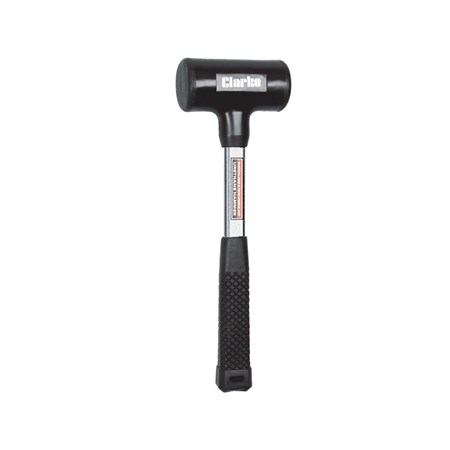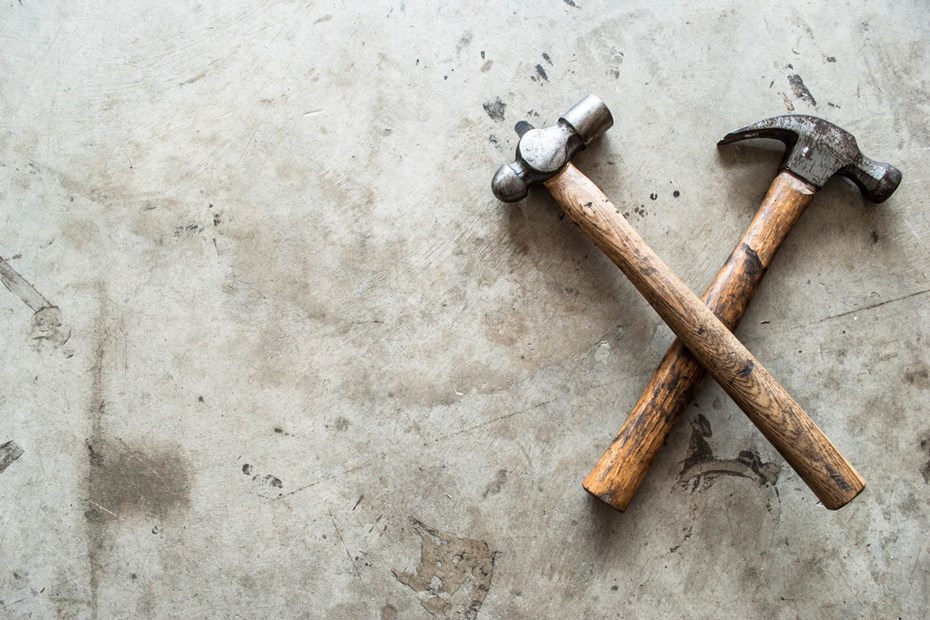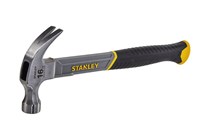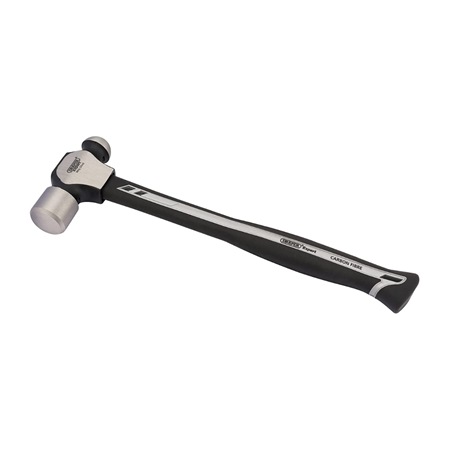If you think hammers are a type of tool only good for thumping nails into wood or knocking down sheds, you’re sorely mistaken.
In the correct hands, hammers are very versatile hand tools and well worth including in your car tool kit and it’s worth understanding what the different types of hammers are for. There are a ton of incredibly specialised (and expensive) hammers you can buy, but we’re focusing on the types you would come across in the world of amateur mechanics and DIY. So, while there are no gavels or non-striking hammers included in our roundup, you will find all the essentials.
While you may never need all of these hammers, there is a good chance that you’ll find a couple of hammers are useful to have with you in the car or in the garage tool rack for various motoring and DIY tasks.
The best hammers at a glance:
Best claw hammer: Stanley 16oz Fiberglass Hammer – Buy now from Amazon UK
Best ball-peen hammer: Draper Expert Carbon Fibre Hammer – Buy now from Amazon UK
Best dead blow hammer: Clarke 32oz Deadblow Hammer – Buy now from Machine Mart
The best hammers
Pros
- Hammering and removing nails
- Good strong grip
- Recognised brand
Cons
- Only for nails up to 75mm in length
| Weight: | 450g |
| Material: | Fibreglass |
| Grip: | Rubber |
| Style: | Claw hammer |
Pros
- Shock absorbing grip
- Lacquer Coating for Rust Protection
Cons
- Carbon fibre can be brittle and crack without you noticing
| Weight: | 680g |
| Material: | Rubber, Steel & Carbon Fibre |
| Grip: | Rubber |
| Style: | Claw hammer |
The best dead blow hammer


Pros
- Disperses energy well
- Good weight
- Minimal damage to struck surface
Cons
- Not any at this price
| Weight: | 900g |
| Material: | Rubber & Steel |
| Grip: | Rubber |
| Style: | Blow hammer |
Pros
- Respected brand
- Comes with alternative attachments to carry out other tasks
Cons
- Entry level product
| Weight: | 3.64 kg |
| Material: | Not given |
| Grip: | Rubber |
| Style: | slide hammer |
The best rubber mallet


Pros
- Minimises any surface damage
- Well weighted
- Comfortable wooden handle
Cons
- Not suitable for heavy-duty work
FAQs
-
What are the main types of hammer available?
• Claw hammer - This is a classic hammer you'll more than likely be familiar with. The claw hammer is essential for any toolbox. So-called because of the claw on the rear of the head to pry nails out of surfaces, this style of tool is best suited to woodworking. Though they are too brittle for working on metal, one of these is still a must-buy for any garage or home.
Automotive use - There's actually not a lot you can do with a claw hammer (unless the car is made of wood)
DIY use - Assembling furniture, woodworking, nailing, removing nails
• Claw hammer - This is a classic hammer you'll more than likely be familiar with. The claw hammer is essential for any toolbox. So-called because of the claw on the rear of the head to pry nails out of surfaces, this style of tool is best suited to woodworking. Though they are too brittle for working on metal, one of these is still a must-buy for any garage or home.
Automotive use - There's actually not a lot you can do with a claw hammer (unless the car is made of wood)
DIY use - Assembling furniture, woodworking, nailing, removing nails
• Ball-peen hammer - Another common tool, the ball-peen is also known as a ball-pein or machinist's hammer. It's designed primarily for use with metal surfaces - the head is often made of toughened alloys or high-carbon steel so it's tough enough to be used with metal and makes use of a rounded peen that's designed for peening metal (used to improve a metal's surface).
Automotive use - fixing small dents, preparing gaskets, rounding off fasteners
DIY use - Anything involving metal
• Dead blow hammer - An aggressive-sounding name for something that's actually rather gentle, a dead blow hammer is designed to deliver a controlled strike. This means that it won't damage the surface (i.e. leave dents) or rebound but is strong enough for hammering. Either made with a solid or hollow head, dead blow hammers are designed to dissipate energy over a longer period of time to prevent the risk of denting. Often made of plastic, rubber or composite materials, these products are incredibly precise and favoured for complex hammering jobs.
Automotive use - removing and installing wheel trims, dislodging stuck parts, delicate hammering
DIY use - working with delicate areas, woodworking with softwoods
• Slide hammer - A very specialised type of hammer, the slide hammer pulls rather than pushes. Used primarily to pull dents and remove bearings, these hammers may not be entirely essential but will prove invaluable in the right situation.
Automotive use - dent pulling, removing bearings
DIY use - not much -
What type of hammer should I keep in my car for emergencies?
A multi-purpose emergency hammer is ideal for keeping in your car. It of.ten includes a window breaker and a seatbelt cutter, which can be lifesaving in an accident. Additionally, a ball-peen hammer is useful for automotive repairs due to its ability to shape metal and strike chisels.
-
How do I use a hammer to change a tyre?
A hammer isn't typically used to change a tyre directly. However, a hammer can help loosen stuck wheel nuts by gently tapping the wrench. If a wheel is stuck on the hub, you can tap the back of the tyre with a rubber mallet to break the rust seal.
Sign up to the Parkers Newsletter to keep up to date with more of the latest reviews, news, and recommendations from the Parkers team.
Just so you know, whilst we may receive a commission or other compensation from the links on this page, we never allow this to influence product selections – read why you should trust us
Just so you know, we may receive a commission or other compensation from the links on this website - read why you should trust us.



















